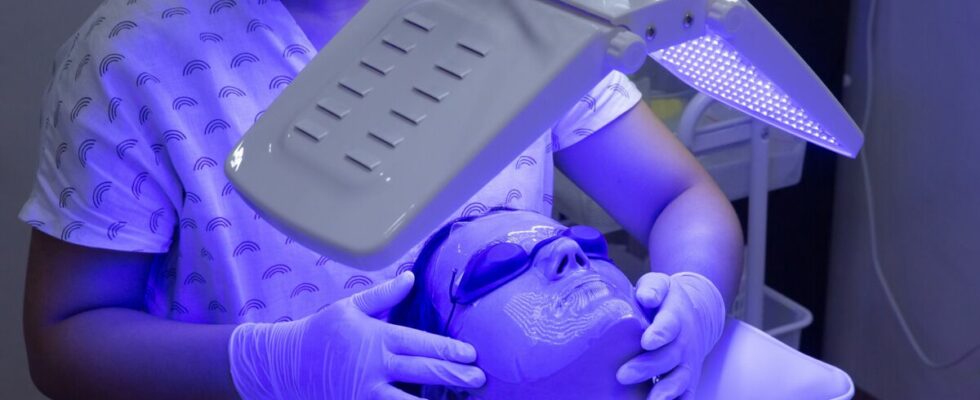Light therapy is an effective non-drug treatment for depression that involves exposing people suffering from depression to polychromatic artificial light at different dosages depending on the type of depression. The antidepressant effect of light therapy is demonstrated both in depression in the context of unipolar disorder and seasonal or non-seasonal bipolar disorder. This therapy has also shown interest in preventing seasonal depression. Dr Maruani tells us that “light therapy can be used either as monotherapy (light therapy alone) or in combination with pharmacological treatments (antidepressants, mood stabilizers) and that when light therapy is combined with antidepressants or mood stabilizers the effectiveness is greater than that light therapy alone or antidepressants alone.”
Why can light affect mood disorders?
We know that light information is transmitted to the brain via melanopsin ganglion cells in the retina which are photosensitive (sensitive to light). “Studies have shown that there is a so-called “circadian” neural pathway, with the effects of light on mood via the synchronization of circadian rhythms (i.e. over 24 hours) and a neural pathway between these retinal cells and brain regions involved in the regulation system of emotions, sleep and alertness”, informs Dr. Maruani. Light is therefore directly involved in the regulation of a set of key biological functions. “Several studies show that people with mood disorders may present a disruption in light signal processing at different levels of light signaling pathways”, she explains. Bringing light could possibly act on these neuronal pathways.
Light therapy and depression: how does it work in practice?
Light therapy for a mood disorder (bipolar disorder, depression, seasonal depression) must be accompanied by a doctor. “The prescription depends on the mood disorder. Different parameters must be adjusted: the moment of exposure, the light intensity (expressed in Lux), the duration of exposure, the distance and the angle of the light source. light, the light spectrum (colors of light), the way in which this light is delivered (glasses or lamp)”, explains Dr. Maruani.
Today there are already treatment protocols for different mood disorders. This therapy has the advantage of being able to be combined with other treatments, of acting quickly with effects sometimes from the first week of treatment. Furthermore, it is well tolerated and there are few contraindications. The main contraindications to light therapy are mainly ophthalmic disorders (retinopathy, glaucoma, cataracts, age-related macular degeneration).
Sources:
- *Maruani J and Geoffroy PA (2019) Bright Light as a Personalized Precision Treatment of Mood Disorders. Forehead. Psychiatry 10:85. doi: 10.3389/fpsyt.2019.00085
- *Maruani, J.; Geoffroy, PA Multi-Level Processes and Retina–Brain Pathways of Photic Regulation of Mood. J. Clin. Med. 2022, 11, 448. https://doi.org/10.3390/jcm11020448
Read also :
⋙ Light therapy: benefits, contraindications, progress of a session
⋙ Light therapy to boost libido!
⋙ St. John’s Wort, this plant that treats mild depression
